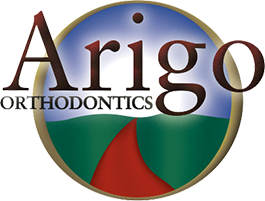Orthodontic Retention
Orthodontic Retention
Protect Your Orthodontic Investment
When we remove your braces, you will begin the retention stage of your treatment. This stage of treatment is essential in order to maintain your beautiful smile. Retainers are used mainly for two reasons: first, to allow bone to rebuild after your teeth have been straightened, and second, to keep individual teeth from drifting. In other words, retainers preserve and stabilize the results you and Dr. Arigo achieved through orthodontic treatment.
There are many different types of upper and lower retainers. Dr. Arigo will prescribe the type of retainer that will best retain (hold) your teeth based on your specific needs. Retainers can be either removable (the kind you take in and out) or fixed (bonded behind your teeth). Long-term retention is recommended, as well as periodic visits to our office to evaluate your retainers.
- Wear your retainers as instructed!
- Remove your retainers to eat and drink
- Clean your retainers daily
- Keep your retainers away from pets and any heat source
- If your retainers are lost, broken or do not fit properly, please contact our office as soon as possible
- Preserve your beautiful smile!
You've worked hard for your beautiful smile; keep it that way!
You’ve worked hard for your beautiful smile; keep it that way!
Finally, your braces have been removed and your smile is beautiful, straight, and best of all, metal-free! However, your orthodontic journey isn’t quite completed. To keep your smile looking its best, you’ll have to wear a retainer to preserve and stabilize your results. Retainers are needed to control or limit potential changes in tooth position. They are used after braces treatment to hold teeth in their correct alignment while the surrounding gums, bone, and muscle adjust to the new positioning of your teeth.
TYPES OF RETAINERS
Retainers are custom-made and can be removable or fixed.
- Traditional removable retainers typically include a metal wire that surrounds the front teeth and is attached to an acrylic arch that sits in the roof of the mouth. The metal wires can be adjusted to finish treatment and continue minor movement of the front teeth as needed.
- Aligner-style retainers, or Essix retainers, look similar to clear aligners and offer a more aesthetic alternative to wire retainers. This clear retainer may fit over the entire arch of your teeth, or only from canine to canine (clip-on retainer). It is produced from a mold of your newly aligned teeth.
- Fixed retainers consist of wires bonded behind the bottom and/or top teeth. While the device is usually required no more than a year after wisdom teeth have been extracted, it is often kept in place for life.
PROS & CONS
Removable retainers can be taken out for eating and hygiene routines.
Removable retainers can get lost easily, so remember to keep yours in the case whenever you remove it to eat or brush.
A fixed retainer is great if you don’t want to keep track of it, or if you don’t want to worry about how many hours per day it must be worn.
Teeth with fixed retainers require a little extra attention to remove tartar while flossing. Patients with fixed retainers often must use floss threaders to pass dental floss through the small spaces between the retainer and the teeth.
